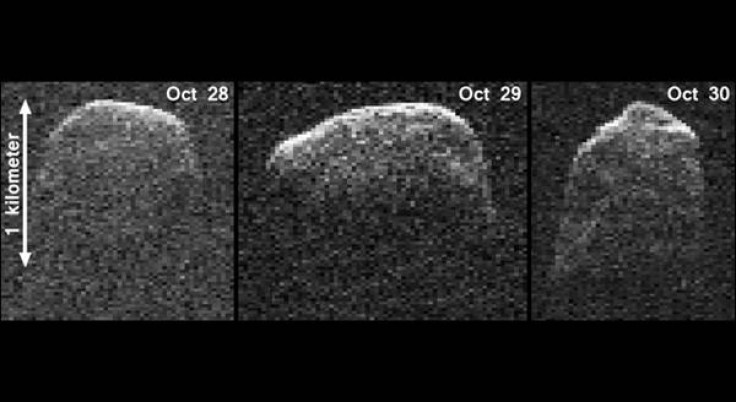Mile-Wide Asteroid Photographed By NASA As It Passes Close By Earth

Scientists at NASA captured stunning images of a mile-wide asteroid as it approached Earth over three days in late October and early November.
NASA describes asteroid 2007 PA8 as “an elongated, irregularly shaped object approximately one mile wide, with ridges and perhaps craters.” Scientists at NASA also noted that the large, oddly shaped asteroid rotates “very slowly, roughly once every three to four days.”
NASA captured the images using a 70m antenna in Goldstone, Calif., according to The Register. The antenna, along with two others in Spain and Australia, make up NASA’s Deep Space Network, which is partially responsible for watching for asteroids that could threaten to strike Earth.
At at its closest, the asteroid was about 5.5 million miles away. For comparison, the moon is just under 240,000 miles away from the Earth, putting the mile-wide asteroid about 17 times further away than the moon. Of course, that sounds like an astronomical distance, and it certainly is compared to anything near our planet, but it’s nothing on a cosmic scale.
To put it in perspective, Mars and Venus can both, depending on where they are in their orbits, be the closest planet to earth. The closest Mars has ever come to Earth is about 36 million miles, while Venus occasionally comes as close as 23.6 million miles.
The distance from Earth to this mile-wide asteroid is fairly close in terms of the solar system. And many asteroids pass much, much closer to Earth than 2007 PA8.
But no one has to worry about 2007 PA8 getting too close for comfort. According to NASA, this was the closest the mile-wide asteroid will be to Earth for another 200 years.
© Copyright IBTimes 2024. All rights reserved.












